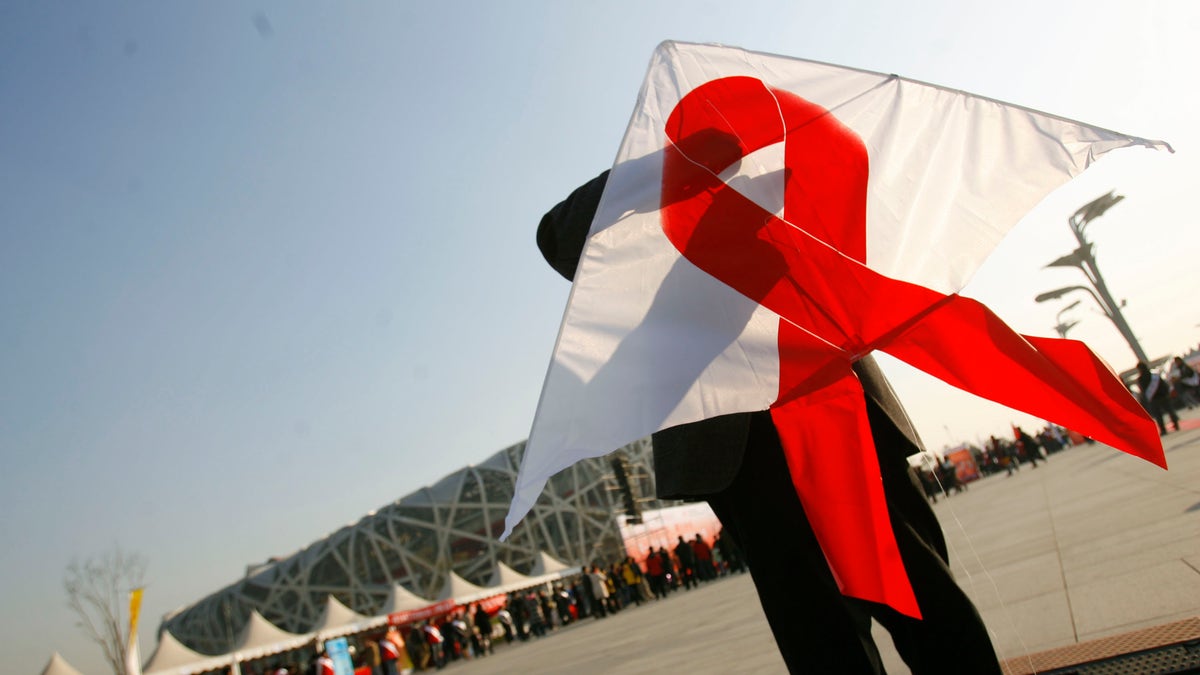
BEIJING, CHINA - NOVEMBER 30: (CHINA OUT) A volunteer waits to fly a kite decorated with a red ribbon during an AIDS awareness promotion at the National Stadium to mark the upcoming World AIDS Day on November 30, 2008 in Beijing, China. According to official estimates China has 700,000 people living with HIV with an estimated 85,000 with AIDS. (Photo by China Photos/Getty Images) (2008 China Photos)
New HIV cases have been falling in the United States in most racial and ethnic groups, except among gay Hispanic men, according to the Centers for Disease Control and Prevention.
CDC officials reported Sunday that HIV diagnoses have been declining in many groups, including gay and bisexual white men, heterosexuals and people who inject drugs.
But that is no reason to celebrate just yet. The CDC shows a disturbing uptick of HIV cases among gay Hispanic males. The CDC says the number of Latinos diagnosed with HIV climbed 24 percent between 2005 and 2014.
In 2013, according to the CDC, Latino accounted for one-third of all new diagnoses while only representing 17 percent of the U.S. population.
Eugene McCray, director of the CDC’s Division of HIV/AIDS Prevention, said the increase is a problem that the CDC has not been able to explain.
"Is it because the prevention interventions are just not getting to that group in a way that's effective?" he told the Verge. "We're going to be looking at that very carefully."
In gay black men, new infections is finally leveling off. The new figures show that the number of newly diagnosed cases in gay and bisexual black men hasn't moved up much since 2010 — less than 1 percent. For younger men in that group — who have had alarming infection rates — new diagnoses dropped 2 percent.
The group accounts for about 10,000 of the 40,000 new HIV cases diagnosed last year, according to the Centers for Disease Control and Prevention, which presented the new figures at a conference in Atlanta.
The federal agency's Dr. Jonathan Mermin said the new numbers are a cause for hope, while another HIV expert said they are hardly good news.
"Stabilizing at 10,000 is not a reason to celebrate," said Dr. Carlos del Rio of Emory University, head of a national group for doctors who treat AIDS and HIV.
Government and private agencies have been working for decades to increase HIV testing and promote safe sex and prevention. But del Rio said a lot of credit should go to improvements in medical care. More and better treatment means more HIV infected people have lowered amounts of the virus in their blood, making them significantly less infectious, he said.
The tally of new diagnoses comes from state health departments; doctors and hospitals are required to report new HIV infections.
Last year, HIV was diagnosed in about 27,000 gay and bisexual men, 10,000 heterosexuals and 2,000 injection drug users.
Based on reporting by the Associated Press.
